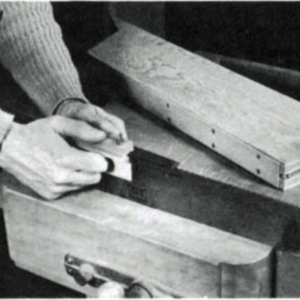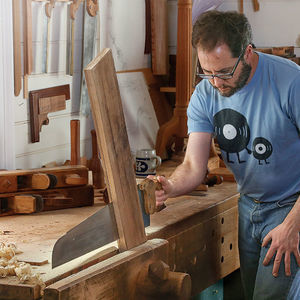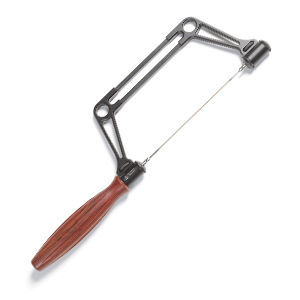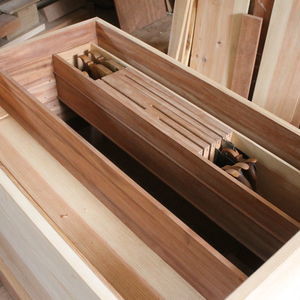Tashiro Hardware - Z-Saw Japanese Handsaw
The Z-saw japanese pull saw features interchangeable blades for ripping and crosscutting, with different teeth configurations, and produces a thin-kerf cut.
Western-style saws cut on the push stroke. Japanese saws, on the other hand, cut when pulled.
Generally, when ripping thick stock by hand, I use a Western-style saw because on the down stroke the weight of the saw helps feed the teeth into the wood. But when crosscutting or cutting dovetails or tenons, I think a Japanese saw has some distinct advantages. On the pull stroke, the blade is in tension and can’t buckle unexpectedly. Plus the blade can be made from relatively thin steel. The result is a narrow kerf and less waste.
At one time, Japanese saws were hard to come by in the United States. Now, however, they’re available in most woodworking retail stores and catalogs. Among all of the current choices, I’ve come to favor a set sold under the Z-Saw name.
Z-Saws have several features I like. The blades are interchangeable, so you need only one handle. And it takes just seconds to change a blade.
But I especially like the tooth hardness of the blades—slightly over 68 Rockwell C—making them harder than most files. Of course, that means there’s no practical way to sharpen these saws. But that drawback is more than offset by longer cutting life. And because Z-Saw blades are mass-produced, they’re relatively inexpensive. Besides, for most of us, cutting wood is a lot more enjoyable than sharpening steel.
I use the general-purpose blades for ripping and crosscutting stock. But for cutting joints such as dovetails and tenons, the lighter, fine-tooth blades work best. However, the fine-tooth blades need stiffening along the back, so they do best mounted in a handle with a built-in spine.
Fine Woodworking Recommended Products

Veritas Wheel Marking Gauge

Suizan Japanese Pull Saw

Bahco 6-Inch Card Scraper






















Log in or create an account to post a comment.
Sign up Log in